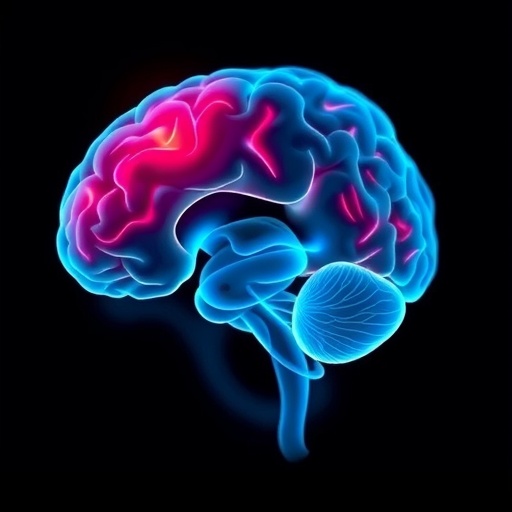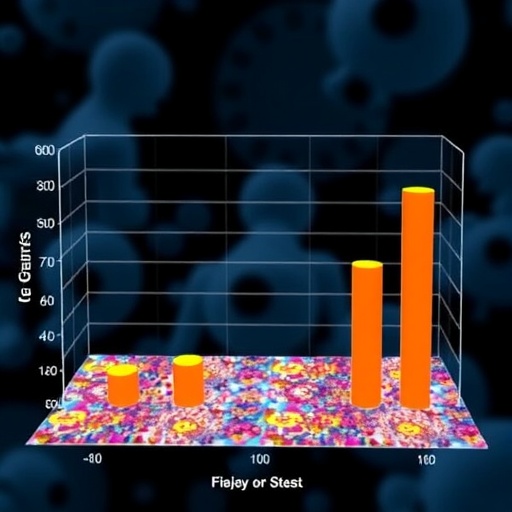In a groundbreaking fusion of artificial intelligence and neonatal healthcare, researchers in China have unveiled a cutting-edge deep learning approach to revolutionize the screening of cerebral lesions in newborns using ultrasound imagery. This pioneering study, published in Nature Communications, showcases a technological leap in early diagnosis that holds enormous potential to reshape neonatal care in China and beyond, promising faster, more accurate, and widely accessible detection of brain abnormalities in critically vulnerable infants.
The challenge of identifying cerebral lesions in neonates has long posed a formidable obstacle to pediatric medicine. Ultrasound imaging, though widely utilized for its non-invasive nature, affordability, and safety, requires expert interpretation that is often constrained by the availability and experience of specialized clinicians. Subtle brain lesions may be missed or misclassified, delaying interventions that could be crucial for an infant’s neurodevelopmental outcomes. This is where the revolutionary impact of deep learning technologies comes into play, offering an automated, objective lens to enhance diagnostic precision.
The study, spearheaded by Lin, Zhang, Duan, and colleagues, focuses on leveraging convolutional neural networks (CNNs), a class of deep learning algorithms known for their exceptional performance in image analysis tasks. By training these networks on a large dataset of neonatal cranial ultrasound images gathered from multiple hospitals across China, the team developed a model capable of detecting cerebral lesions with remarkable sensitivity and specificity. The method not only identifies the presence of lesions but also provides insights into lesion subtypes, enabling clinicians to tailor treatment strategies more effectively.
.adsslot_RVlmbCToUG{width:728px !important;height:90px !important;}
@media(max-width:1199px){ .adsslot_RVlmbCToUG{width:468px !important;height:60px !important;}
}
@media(max-width:767px){ .adsslot_RVlmbCToUG{width:320px !important;height:50px !important;}
}
ADVERTISEMENT
What sets this work apart is its sheer scale and diversity of data, which strengthens the model’s generalizability across different clinical settings. The dataset incorporated thousands of ultrasound scans capturing a spectrum of normal and pathological findings. This extensive groundwork allowed the researchers to optimize model architectures, hyperparameters, and training protocols to achieve a robust diagnostic tool. Their approach overcame long-standing barriers related to variability in image quality, infant movement artifacts, and heterogeneous lesion presentations.
A crucial aspect of the researchers’ methodology was the implementation of rigorous annotation procedures. Expert radiologists meticulously labeled thousands of images, categorizing lesion types and shapes, thereby creating a reliable ground truth foundation. This labor-intensive curation ensured that the deep learning model learned from high-fidelity data. The paper details innovative techniques to handle class imbalance—a common hurdle because pathological cases are less frequent than normal images—thereby boosting the network’s ability to detect rare but clinically significant lesions.
Beyond technical sophistication, the study also addressed vital concerns about model interpretability and clinical integration. The authors incorporated attention mechanisms and gradient-based visualization techniques to allow clinicians to visualize regions of the ultrasound image that contributed most to the model’s prediction. This transparency is crucial for fostering trust in AI-assisted diagnoses and facilitating adoption in real-world neonatal intensive care units (NICUs).
The implications for global health are profound. Neonatal cerebral injuries are among the leading causes of lifelong neurological disabilities such as cerebral palsy and cognitive impairments. Early recognition through ultrasound screening enables timely therapeutic interventions, including neuroprotective strategies and tailored rehabilitation. By automating and standardizing this process, the AI model developed by the Chinese team could bridge disparities in neonatal care, especially in rural or under-resourced regions where expert sonographers are scarce.
Furthermore, the study anticipates that integration of this AI tool within existing clinical workflows can streamline screening protocols. The automated system can flag high-risk patients rapidly, alerting care teams to urgently review findings and initiate further diagnostic imaging or treatments. Importantly, the system functions on standard ultrasound machines, requiring no additional expensive hardware, potentially easing the pathway to widescale deployment.
Lin and colleagues acknowledge limitations and future directions candidly. While the model demonstrates impressive performance, continuous validation on diverse populations is essential to reduce biases influenced by demographic or equipment differences. They also highlight the importance of combining ultrasound findings with other clinical data such as genetic profiles and perinatal history to enhance predictive accuracy further. The team envisions a future where AI-driven neonatal screening represents just one component of a comprehensive, personalized brain health monitoring system.
Technically, the researchers ventured beyond conventional CNN architectures by experimenting with hybrid models incorporating recurrent neural networks (RNNs) to capture temporal dynamics in ultrasound video sequences. This innovative step acknowledges that cerebral lesions may manifest variably over time, and a static image snapshot might not suffice. Initial trials yielded encouraging results, suggesting that dynamic data could provide richer diagnostic cues and improve longitudinal patient monitoring.
The paper also discusses the computational efficiency of the proposed model, emphasizing its compatibility with limited-resource hospital environments. The model’s inference speed and low memory footprint enable real-time performance on modest computing devices, a critical factor for adoption in busy NICUs. The open-source release of the codebase further invites global researchers to refine and adapt the tool, fostering collaborative advancements in neonatal neuroimaging AI.
Equally important is the ethical dimension considered in the study. The authors detail patient privacy safeguards, data anonymization protocols, and adherence to regulatory frameworks governing AI in healthcare. They advocate for ongoing ethical oversight to ensure the responsible deployment of such technologies, preventing potential misuse and addressing equity in access and outcomes.
This research arrives at a particularly opportune moment as healthcare systems worldwide grapple with resource constraints heightened by global challenges such as pandemics and aging populations. By harnessing AI’s power, neonatal care can be transformed from reactive to proactive, ensuring brain injuries are caught in their earliest, most treatable stages. The Chinese study exemplifies how cross-disciplinary collaboration—combining AI expertise, clinical acumen, and radiological skill—can yield innovations with profound societal impact.
In summary, the work by Lin et al. represents a landmark achievement in neonatal medicine and artificial intelligence applications. It bridges longstanding gaps in brain lesion detection, democratizes access to expert-level interpretation, and lays a foundation for future advancements that blend imaging, genomics, and digital health seamlessly. As neonatal neuroimaging continues to evolve, such AI-driven approaches will be indispensable tools in safeguarding infant brain health, ultimately improving lifelong outcomes for countless children worldwide.
The dawn of AI-empowered neonatal screening heralds a paradigm shift—where early diagnosis is no longer a privilege reserved for specialized centers but a universal right enabled by technology. The vision of a world where every newborn’s brain is carefully and accurately assessed within hours of birth is now one step closer to reality, thanks to the pioneering efforts of researchers merging deep learning with compassionate care.
Subject of Research: Deep learning-based screening of neonatal cerebral lesions using ultrasound imaging.
Article Title: Deep learning approach for screening neonatal cerebral lesions on ultrasound in China.
Article References:
Lin, Z., Zhang, H., Duan, X. et al. Deep learning approach for screening neonatal cerebral lesions on ultrasound in China. Nat Commun 16, 7778 (2025). https://doi.org/10.1038/s41467-025-63096-9
Image Credits: AI Generated
Tags: accessibility of brain lesion detection in healthcareAI technology in medical diagnosticsartificial intelligence in pediatric medicineautomated diagnosis of brain lesionsconvolutional neural networks for image analysisdeep learning in neonatal healthcaredetecting cerebral lesions in newbornsearly diagnosis of neurodevelopmental issuesimproving neonatal outcomes with deep learningneonatal care advancements in Chinanon-invasive imaging techniques for infantsultrasound imaging for brain abnormalities





